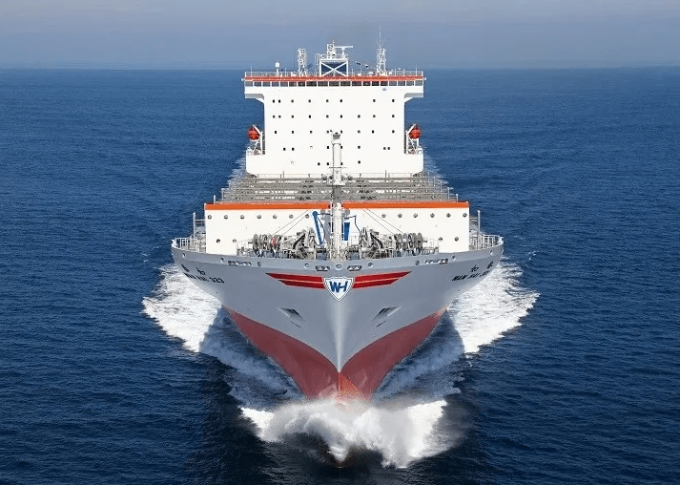Liner schedule reliability improving, but late ships are arriving even later
Despite several mainline trades continuing to be marred by issues of port congestion and equipment ...
TFII: SOLID AS USUALMAERSK: WEAKENINGF: FALLING OFF A CLIFFAAPL: 'BOTTLENECK IN MAINLAND CHINA'AAPL: CHINA TRENDSDHL: GROWTH CAPEXR: ANOTHER SOLID DELIVERYMFT: HERE COMES THE FALLDSV: LOOK AT SCHENKER PERFORMANCEUPS: A WAVE OF DOWNGRADES DSV: BARGAIN BINKNX: EARNINGS OUTODFL: RISING AND FALLING AND THEN RISING
TFII: SOLID AS USUALMAERSK: WEAKENINGF: FALLING OFF A CLIFFAAPL: 'BOTTLENECK IN MAINLAND CHINA'AAPL: CHINA TRENDSDHL: GROWTH CAPEXR: ANOTHER SOLID DELIVERYMFT: HERE COMES THE FALLDSV: LOOK AT SCHENKER PERFORMANCEUPS: A WAVE OF DOWNGRADES DSV: BARGAIN BINKNX: EARNINGS OUTODFL: RISING AND FALLING AND THEN RISING

Wan Hai Lines has set aside $1.55bn to invest in ships, container terminal equipment and new boxes, GM Tommy Hsieh said on Friday.
The Taiwanese liner operator, primarily an intra-Asia carrier, recorded a $3.03bn net profit in 2022, down 10% from 2021, and incurred a loss in Q4.
Explaining the capital expenditure plan, Mr Hsieh said: “We’re still optimistic about the long-term growth of container shipping. The decline in freight rates has been restrained. After the lunar new year, the freight rates of some intra-Asia routes have risen.
“Inflation in Europe and the US is easing and we think the container shipping market will be better in H2 than in Q1. Contract rates for transpacific shipments, which we expect to conclude at the end of this month, is likely to be higher than current spot rates.”
At the start of the year, Wan Hai operated 112 owned and 33 chartered vessels, with a total 440,000 teu of capacity. Last year, the company took delivery of a dozen newbuildings and purchased 10 second-hand ships, reducing its chartered fleet by 26 vessels.
In Q4 22 alone, 11 chartered ships were redelivered, saving considerable costs, and Mr Hsieh added that none of Wan Hai’s ships is idled.
This year, 24 newbuildings will be delivered, and next year another 12 will join the fleet.
Mr Hsieh said in 2024, Wan Hai expected to spend $641m in capital expenditure. These investment plans have affected Wan Hai’s dividend payout this year, with the company offering TW$5 ($0.16) per share, a reduction of more than 50% from last year, which amounts to a distribution of only 15%, when compared to earnings per share of TW$33.17 ($1.08).
On concerns about the supply-demand balance, Mr Hsieh said: “Our ships range from 1,700 teu to 13,000 teu. Since H2 22, transpacific demand has been sluggish, but some customers are adjusting their inventories. With the deployment of the larger vessels to the transpacific and Asia-South America services, we will reassign small and mid-sized vessels back to intra-Asia lanes, as well as routes between East Asia, the Persian Gulf and the Indian subcontinent.
“If the Russia-Ukraine conflict abates, we expect US retailers to restock and Q2 and Q3 should be better than Q1. Major US retailers will conclude their contracts with us at the end of April, and cargo volumes should increase with the Q3 peak season.”
Comment on this article